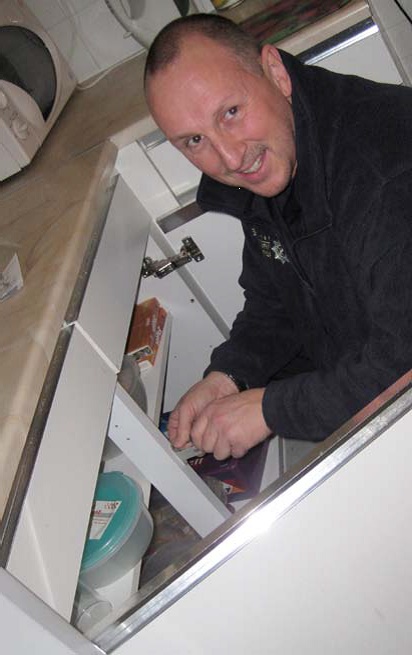13.10.15
How home improvements can reduce pressure on health and social care
Source: PSE - Oct/Nov 2015
Roy McNally, development manager for Foundations, the national body for home improvement agencies and handyperson services, explains why improving and adapting people’s homes can make a vital contribution to health and care.
It is now widely accepted that the only sustainable way to relieve pressure on the NHS and our social care system is to bring about a fundamental shift towards prevention.
We are beginning to see far greater integration between health, housing and social care as the emphasis increasingly switches away from dealing with the consequences of poor health and wellbeing and instead focuses on how we prevent issues developing in the first place.
‘We cannot continue to plough time and money into reactive services’
A combination of ever-more stretched resources and rising demand – partly as a consequence of an ageing demographic – mean we simply cannot continue to plough time and money into reactive services. Early intervention will be absolutely vital if we are to make a successful transition to a culture with prevention at its heart. That will mean, for example, intensive support for troubled families so that children – and their parents – are able to lead healthier lifestyles.
It will also require a far more direct approach to making people more resilient, preventing conditions and illnesses developing in the first place and making changes that improve our wellbeing. In short, we need to get out to people’s homes.
Prominent role for fire services
One notion that is gathering pace is a more prominent role for fire services. A new multi-agency deal between NHS England, Public Health England, the LGA (Local Government Association) and Age UK is looking at how to get firefighters involved in carrying out health checks. It’s particularly apt when you think that this is one arm of our emergency services that made the switch to prevention many years ago – around 80% of fire and rescue services work is now linked to prevention. And it’s an even better fit when you consider that they already carry out 670,000 home safety checks every year. Why not double up and use that same visit to deal with other issues the householder might be facing?
What we’re effectively asking fire and rescue services to do is play a similar role to the 200 home improvement agencies (HIAs) and handyperson services across England that my organisation represents. They offer a single point of contact for vulnerable people, carrying out everything from home adaptations and energy efficiency measures to advice and support on a range of issues that can affect a person’s health and wellbeing. It’s about helping people to live independently, manage long-term conditions and ensure they aren’t living in damp and dangerous homes that ultimately result in hospitalisation.

HIAs come in a variety of shapes and sizes, some run by local authorities and social landlords, while others are standalone charities. The newest is the Merseyside Fire Support Network (MFSN), the charitable arm of Merseyside Fire & Rescue Service. It is the first fire and rescue service charity in the country to become an accredited HIA and offers an insight into how its counterparts across the country can play a vital role in improving the health of the nation. Crucially, it also demonstrates how some of the barriers to greater involvement can be overcome.
Natural fit
In many ways, becoming an HIA was a natural fit for MFSN. From fitting smoke alarms and offering fire prevention advice, it has evolved to offer a range of community safety services including keeping young children from harm, helping people to resolve hoarding issues and tackling social isolation among vulnerable adults. The charity visits more than 8,000 homes across Merseyside every year and over the last 15 years has used the reputation and trust it has built up to great effect.
It is now developing a working relationship with a large social landlord, which also operates as an HIA in Liverpool, to look at new ways to meet the huge unmet need for home support across the city and the rest of Merseyside.
Finding the resources
One of the sticking points getting in the way of a wider preventative role for fire and rescue services is resources. Like all parts of the public sector, funding has been cut substantially and the LGA expects the budget shortfall for fire and rescue services to reach £600m by the end of this decade. While its staff wear fire service uniforms and it’s inextricably linked to Merseyside Fire & Rescue Service, MFSN’s independence as a charity gives it greater freedom to bid for funding and take on commissions. This includes the Safe and Sound scheme, run with Liverpool and Wirral SureStart Children’s Centres, which over the last five years has seen thousands of homes fitted with safety features. We’re talking about things like locks on kitchen cupboard doors to keep young children away from hazardous substances – some 25,000 under-fives end up at A&E every year because of accidental poisoning.
As an HIA, it can now access even more funding, for example from Foundations Independent Living Trust (FILT). FILT distributes funding, including grants from energy firms like SSE, to help HIAs across the country provide support to vulnerable people. It can also now access funds to carry out adaptations – anything from handrails to technological solutions for those with impaired eyesight – for those eligible for disabled facilities grant from the government.
Given many other fire and rescue services already have charitable arms that carry out much of their community work, could this be the logical avenue for others to follow?
Learning the lessons
One of the most exciting aspects from my perspective is lessons other HIAs can learn from MFSN that will enable them to extend their reach. It has built up a large network of volunteers that give it far greater capacity than would otherwise be the case. Also, there’s much for other organisations to learn from the way MFSN has constantly adapted to both evolving demand for its services and constant changes with regard to funding sources.
MFSN has been something of a trailblazer and the next chapter of its development will help to bring a more preventative approach to Merseyside. It offers a model that could truly harness the scale and potential of our fire and rescue services.
Evidence base
 Paul Smith has recently taken over as director of Foundations, having previously been senior housing and care commissioning manager for Staffordshire County Council and running award-winning HIAs in Telford & Wrekin and Cannock Chase.
Paul Smith has recently taken over as director of Foundations, having previously been senior housing and care commissioning manager for Staffordshire County Council and running award-winning HIAs in Telford & Wrekin and Cannock Chase.
He says that historically, HIAs were mostly funded through housing authorities, usually at district-council level. From the early 2000s, funding came instead from the social care departments of top-tier authorities, and more recently it has started to move again, with money now coming from clinical commissioning groups and public health.
Smith, who has recently taken over as director of Foundations, expects that trend to continue. He said that of Foundations’ 200-odd members, “around 20 are getting good chunks of funding from the health sector” – a number that will probably rise.
In an interview at PSE’s offices, he told us: “I think [health commissioners] are starting to see that if you do something to somebody’s home, they can stay there longer, and that will cost less to the health sector. A lot of the schemes are focused particularly on hospital discharge – people are getting stuck in hospital because their home is cold or damp or hasn’t got the adaptations for them to return from hospital. So an HIA can go and fix those bits and pieces and the person can get out of hospital and it also frees up a bed.”
He said Manchester Care & Repair is a particularly good example. Everybody aged over 55 who is discharged from hospital gets a call, and if they need anything doing to their home, a handyperson goes out and does it. Smith said: “They contact something like 13,000 people a year, and a handyperson goes to see about 2,000 of those to do work. Those couple of thousand people may otherwise have gone straight back into hospital.”
Smith has compelling evidence to back up foundation’s claims, such as an analysis of the database of everyone in nursing or residential care when he was at Staffordshire council showing that the average age of people who had had a home adaption was eight years older than those who had not. “That meant they stayed in care for a correspondingly shorter amount of time.”
Another study looked at the effects of Disabled Facilities Grants (DFGs), which provide money for disabled people to make adaptations to their home. HIAs are responsible for about half of that activity, and Smith said that about 40% of people with a DFG also have some sort of council care package. “Of those people, on average, a year after they had an adaptation, their care package had reduced by nine hours. That’s nine hours of care every week – that’s a considerable saving,” he told us.